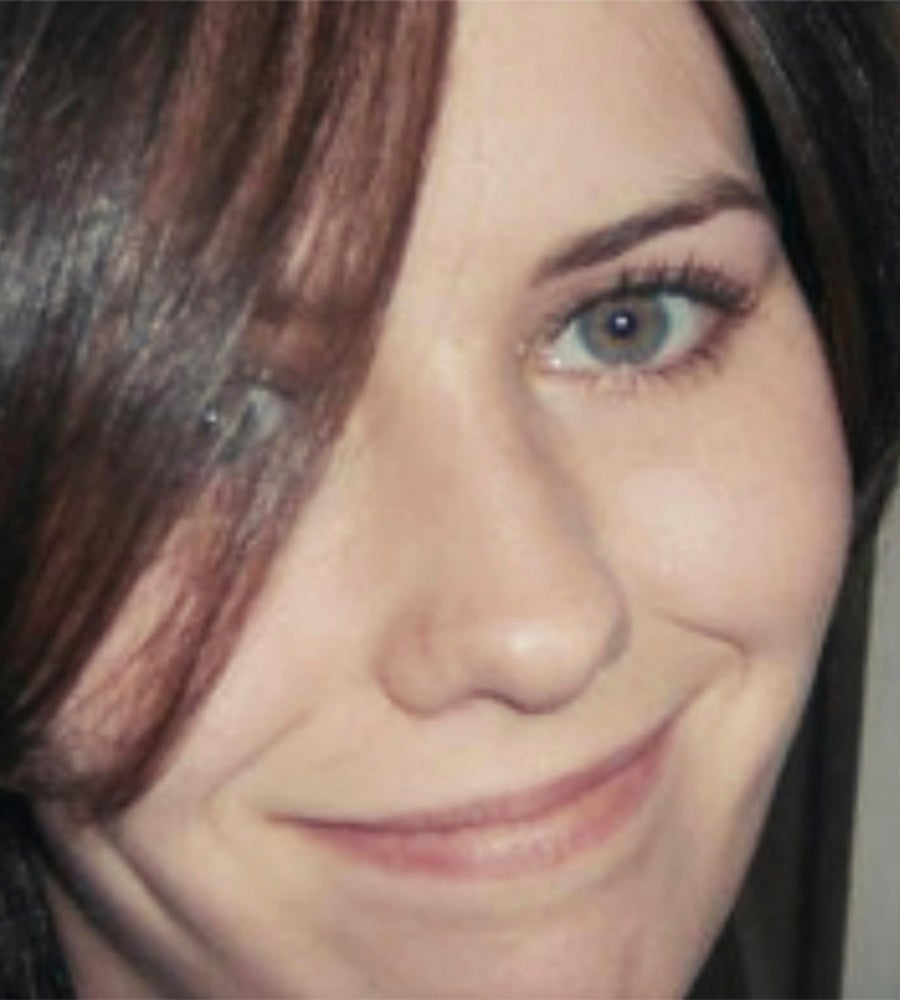Rex Heuermann charged with murder of fourth Gilgo Beach victim
Maureen Brainard-Barnes was last seen alive in July 2007, when she left a motel in Manhattan to meet a client for sex work
Gilgo Beach serial killer suspect Rex Heuermann has now been charged with the murder of a fourth woman – more than a decade after she vanished from Manhattan, her body later found dumped along the Long Island shores.
The 60-year-old Manhattan-based architect appeared in Suffolk County Courthouse in Riverhead, Long Island, on Tuesday morning where he was hit with a fresh charge of second-degree murder in the death of Maureen Brainard-Barnes.
Brainard-Barnes was last seen alive on 9 July 2007, when she left a motel in Manhattan to meet a client for sex work.
At the time, the 25-year-old was living in Norwich, Connecticut, but had travelled to Manhattan in early July where she was staying at and working out of the Super 8 Motel on 59 West 46th St. She was known to advertise her services on Craigslist, Backpage and other websites under the names of Juliana or Marie.
Just before midnight on 9 July 2007, Brainard-Barnes called a friend in Connecticut to say she would be going to meet a client on an “out-call” outside of the motel.
She was never seen or heard from again.
Over three years later in December 2010, her remains were discovered dumped in the thick brush along Ocean Parkway, near Gilgo Beach. Her body had been bound by three leather belts, one of which was embossed with the initials “W.H.” or H.M.”
At the time of her disappearance, prosecutors allege that Mr Heuermann was home alone in Massapequa Park, with his wife Asa Ellerup and their two children Victoria and Christopher out of state on vacation.
Documents retrieved during a search of the accused killer’s storage unit as well as cellphone records reveal that Ms Ellerup and the children checked into a hotel in Atlantic City from 6 July through 20 July 2007, according to the superseding indictment, unsealed in court on Tuesday.

Mr Heuermann allegedly stayed behind in New York.
On 9 July – three days after his family left – Brainard-Barnes disappeared.
Four days later on 13 July, Mr Heuermann joined his family in Atlantic City, according to prosecutors.
“Based on the foregoing, the murders of all four victims occurred at times when Defendant Heuermann’s wife and children were traveling out of state, which allowed Defendant Heuermann unfettered time to execute his plans for each victim without any fear that his family would uncover or learn of his involvement in these crimes,” the superseding indictment states.
Prosecutors also revealed a series of messages sent in March 2020 from a burner phone used by Mr Heuermann to a woman advertising escort work in the Massapequa area.
In the messages, Mr Heuermann appears to be arranging a meeting with the woman based on when his wife is away.
“I WAS FREE TODAY MY WIFE IS OUT FOR THE DAY,” he allegedly wrote.
The accused killer, according to prosecutors, had several burner phones held “in fictitious names and used for illicit activities”.
Two burner phones seized from Mr Heuermann at the time of his arrest – one from his person and one from the office of his Midtown Manhattan architecture firm – had allegedly been used by him to contact sex workers between 2020 and 2023.
The court documents also reveal new chilling details about the suspected serial killer’s use of several online accounts, as well as his disturbing online searches.
Email accounts allegedly used by Mr Heuermann were used “to access and/or conduct searches related to pornography, rape, torture, and sex workers several thousand times”, prosecutors said.
Among the harrowing searches were: “autopsy photos of female”, “stories of rape audio”, “escorts manhattan”, and “very skinny white teen tied up porn”.

Prosecutors allege that one of these email accounts was used as recently as July 2021, to access and conduct dozens of searches into the Gilgo Beach homicide investigation.
Hundreds of electronic devices seized following Mr Heuermann’s arrest also revealed that he carried out searches for the Gilgo Beach victims and their family members, for serial killers and for software that could wipe or erase data from computers, according to the indictment.
“Today, Defendant Rex A. Heuermann stands before this Court charged by the Grand Jury in a Superseding Indictment, which incorporates not only the above counts, but the additional charge of: MURDER IN THE SECOND DEGREE, in violation of New York State Penal Law Section 125.25(1), a class A-I violent felony for the death of Maureen Brainard-Barnes on or about July 9, 2007,” prosecutors wrote in the superseding indictment.
Mr Heuermann pleaded not guilty to the new charge in court on Tuesday, as Brainard-Barnes’ sister Melissa Cann looked on from the courtroom. Mr Heuermann’s wife Ms Ellerup and daughter Victoria were also in court for the hearing.
The tragic discovery of Brainard-Barnes’ body was made during the search for Shannan Gilbert, who had gone missing from nearby Oak Beach.
In total, the remains of 11 victims were found in the area, sparking fears that a serial killer or serial killers was on the loose.
Brainard-Barnes and three other women – Megan Waterman, Melissa Barthelemy and Amber Costello – together became known as the “Gilgo Four”.
All four had disappeared in similar circumstances; each working as sex workers who advertised on Craigslist and vanished after going to meet a client. Brainard-Barnes was the first to go missing.
All four were also found in similar circumstances – their bodies dumped within one-quarter mile of each other, bound by belts or tape and some wrapped in burlap along Gilgo Beach.
Mr Heuermann was previously charged with the murders of Waterman, Barthelemy and Costello back in July, when New York law enforcement officials swooped on the suspected serial killer in what marked the first major development in the prolific case.

He was also named the prime suspect in Brainard-Barnes’ murder with outgoing Suffolk County Police Commissioner Rodney Harrison indicating that it would only be a matter of time before he was also charged in her killing.
The initial indictment, unsealed back in July, revealed that Mr Heuermann was tied to the murders through a tip about his pickup truck, a stash of burner phones, “sadistic” online searches and phone calls taunting some of the victims’ families.
A hair belonging to Mr Heuermann was also allegedly found on the burlap wrapped around Waterman’s body.
And, prosecutors said, hairs belonging to his wife Ms Ellerup were found on Waterman, Costello – and on the belt used to bind Brainard-Barnes.
Prosecutors found that the suspect’s wife was out of town at the time of the murders but that her hair could have transferred to the crime scene through her husband’s clothing or through him using items such as tape taken from the family home.
The superseding indictment, unsealed on Tuesday, found that – based on further DNA testing – the hair found on Brainard-Barnes’ body was 7.9 trillion times more likely to have come from Ms Ellerup than from an unrelated individual.
It also revealed new details about the evidence tying Mr Heuermann to the other three victims.
Prosecutors allege that an analysis of Mr Heuermann’s laptop indicates that he used file shredding software on 9 July 2009, not long before he was to meet with Barthelemy.
“Investigators believe this was an attempt to “shred” any digital evidence of the laptop computer being utilized to search for Melissa Barthelemy’s prostitution advertisement,” the documents state.
On 1 September 2010, his laptop was also allegedly used to access Costello’s Backpage ad.
Aroung two hours later, a burner phone linked to Mr Heuermann connected to Costello’s cellphone and then travelled to West Babylon, where she lived. That day, witnesses say a man matching Mr Heuermann’s description sought to hire her – but fell foul to a “ruse” by Costello and her friend.
Following Tuesday’s court hearing, Ms Ellerup’s attorney told reporters outside court that the new allegations further show that she and their two adult children Victoria and Christopher had “no involvement” in the murders.
Mr Heuermann has pleaded not guilty to all charges against him.
He has not been charged in the killings of any of the other seven victims whose remains were found along Gilgo Beach.

The discovery that a serial killer was operating in the area came to light back in May 2010 when Shannan Gilbert, a young woman also working as a sex worker, vanished after leaving a client’s house on foot near Gilgo Beach. She called 911 for help saying she feared for her life and was never seen alive again.
During a search for Gilbert in dense thicket close to the beach, police discovered human remains.
Within days, the “Gilgo Four” victims had been found.
By spring 2011, the number of victims rose to 10.
Gilbert’s body was then found in December 2011.
Her cause of death is widely contested with authorities long claiming that it is not connected to the serial killer or killers but that she died from accidental drowning as she fled from the client’s home.
However, an independent autopsy commissioned by her family ruled that she died by strangulation and her family continue to believe she was murdered.
So far, no charges have been brought in connection to the other victims also found along the shores.

